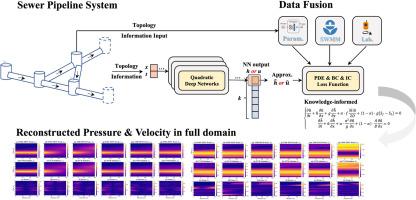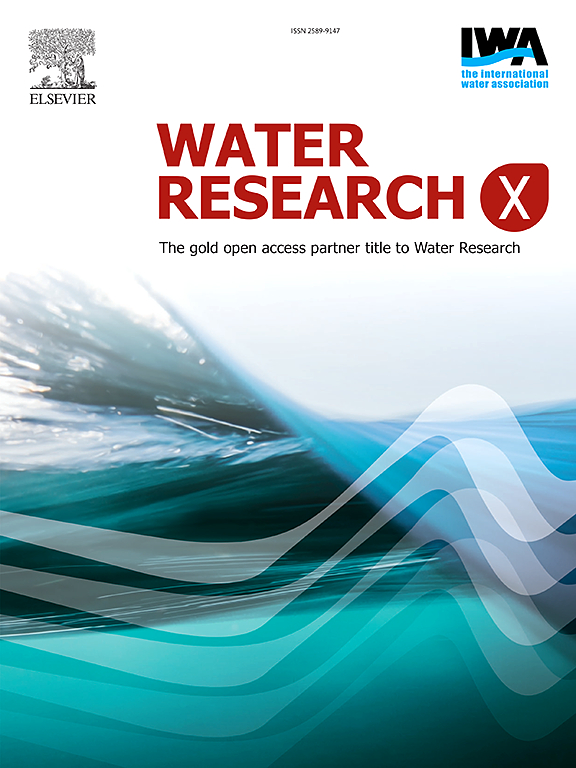通过物理信息机器学习进行数据融合,为下水道系统中的瞬态混合流建模
IF 7.2
2区 环境科学与生态学
Q1 ENGINEERING, ENVIRONMENTAL
引用次数: 0
摘要
自由表面流与加压流之间的过渡,即所谓的瞬态混合流,给城市排水系统(UDS)带来了巨大挑战,例如管道爆裂、道路塌方和喷泉。然而,由于难以整合多源数据、发现动态过程的方程形式复杂以及计算要求高,传统的混合流机理建模面临挑战。为此,我们提出了一个数据驱动模型 TMF-PINN,它利用物理信息神经网络(PINN)来模拟和反演下水道网络中的瞬态混合流(TMF)。该模型将实验数据、模拟结果和偏微分方程(PDE)整合到其损失函数中,充分利用了智能城市供水系统中的大量数据。模型引入了状态因子(α),将明渠和加压水流动态无缝连接,便于快速调整波速。在此基础上,采用了傅立叶特征提取和二次元神经网络来捕捉具有高频特征的复杂动态过程。通过使用暴雨管理模型(SWMM)对三个经典案例进行验证,并与有限体积哈顿-拉克斯-范里尔(HLL)求解器进行比较,结果表明所提出的模型规避了时空分辨率的限制,能够准确预测流场。本文章由计算机程序翻译,如有差异,请以英文原文为准。

Modeling transient mixed flows in sewer systems with data fusion via physics-informed machine learning
Transitions between free-surface and pressurized flows, known as transient mixed flows, have posed significant challenges in urban drainage systems (UDS), e.g., pipe bursts, road collapses, and geysers. However, traditional mechanistic modeling for mixed flows is challenged by the difficult integration of multi-source data, complex equation forms for the discovery of dynamic processes, and high computational demands. In response, we proposed a data-driven model, TMF-PINN, which utilizes a Physics-Informed Neural Network (PINN) to simulate and invert Transient Mixed Flow (TMF) in sewer networks. This model integrates experimental data, simulation results and Partial Differential Equations (PDEs) into its loss function, leveraging the extensive data available in smart urban water systems. A status factor (α) has been introduced to seamlessly link open channel and pressurized flow dynamics, facilitating rapid adjustments in wave speed. On this basis, Fourier feature extraction and quadratic neural networks have been employed to capture complex dynamic processes featuring high-frequency. Validation through three classical cases using the Storm Water Management Model (SWMM) and comparisons with finite volume Harten-Lax-van Leer (HLL) solver reveal that the proposed model circumvents the constraints of spatiotemporal resolution, yielding accurate flow field predictions.
求助全文
通过发布文献求助,成功后即可免费获取论文全文。
去求助
来源期刊

Water Research X
Environmental Science-Water Science and Technology
CiteScore
12.30
自引率
1.30%
发文量
19
期刊介绍:
Water Research X is a sister journal of Water Research, which follows a Gold Open Access model. It focuses on publishing concise, letter-style research papers, visionary perspectives and editorials, as well as mini-reviews on emerging topics. The Journal invites contributions from researchers worldwide on various aspects of the science and technology related to the human impact on the water cycle, water quality, and its global management.
 求助内容:
求助内容: 应助结果提醒方式:
应助结果提醒方式:


